Part 2/3: Some are created Extra-Ordinary
There are three special aspects of the iGalvanic3.0 that in our opinion are unsurpassed:
- ‘Double’ REgenerate2/REclock2/REbalance2 before & after galvanic isolation.
- USB3.0 and USB2.0 Galvanic Isolation on the iFi USB platform.
- Power Station° Stealth Converter super-low noise audiophile USB power with Panasonic OsCons.
These are the three standout features of the iGalvanic3.0 but there are more which are covered in detail in this section.
I. ‘Double’ REclock2/REgenerate2/REbalance2

From the development of the iUSB3.0 devices, we have the leading in-house know-how to improve the USB signal (and power). This is reflected in the iGalvanic3.0. Every data flow is regenerated subject to the iGalvanic3.0’s own precision master clock system.
We did not stop there. Internal and external auditions - with ONE and TWO stage REgeneration versions of the iGalvanic3.0 – saw listeners unanimously prefer TWO sets of REgeneration.
Not being able to settle for one stage, the iGalvanic3.0 has TWO stages (before & after galvanic isolation) hence ‘REgenerate2/REclock2/REbalance2’ which goes ‘above and beyond’ other commercial projects.
This is clearly more expensive to implement and to the best of our knowledge, the iGalavanic3.0 is the only galvanic isolation product that has DOUBLE REgenerate2/REclock2/REbalance2 because this was the ONLY way in our book.
II. All-new USB3.0 galvanic isolation AND USB2.0 galvanic isolation

The iGalvanic3.0 is the only product in the world to offer USB3.0 galvanic isolation. With separate transmitting AND receiving lines, it is superior to USB2.0 at handling high data volumes and is future-proofed.
The iGalvanic3.0 is the only galvanic isolation product suitable for Pro audio use where multichannel recording systems sees bandwidth ‘hit the buffers’ on USB2.0.
The iGalvanic3.0 is fully USB3.0 (and 2.0) standard compliant, with support for all speeds (from 1.5Mbps to 5Gbps) and all transfer modes (including isochronous audio streaming).

The iGalvanic3.0 features two distinctly separate galvanic isolation stages - one for USB3.0 and the other for USB2.0. They CANNOT be the same because the fundamental architecture is different:
- USB3.0 has separate transmitting AND receiving lines.
- USB2.0 is bi-directional on one SHARED line.
Both USB3.0 and USB2.0 galvanic isolation stages are ground-up, new platforms dedicated for computer audiophile systems and available to no-one else.
USB2.0 Galvanic isolation technology (1st Gen) vs USB2.0 (AMR/iFi implementation)

The 1st generation is based upon SerDes (
https://en.wikipedia.org/wiki/SerDes). This de-construction and re-construction of the USB signal is far from ideal. Latency (timing), amongst other things, suffers.
At an early stage, AMR/iFi considered, then discarded, the SerDes platform - and developed a brand new platform. In our opinion, this is technologically superior.
An Analogy: USB2.0 First Gen vs USB2.0 Next Gen
First generation implementation - SerDes
Imagine for a moment, selecting a route that has a bridge (galvanic isolation) that is too narrow for a lorry (USB audio signal) and cannot handle the weight of the lorry. At the bridge the lorry needs to be dismantled into pieces, the pieces need to be carried across and re-assembled on the other side.
The Next Generation - AMR/iFi implementation
The lorry takes a totally different route, one of a quiet, modern 4 lane bridge where the lorry just cruises across effortlessly.
The advantages over first generation USB2.0 are:
- 100% transparent isolation - free from all the deconstructed and reconstructed, compatibility issues/challenges involved with the SerDes (USB2.0 bi-directional) approach.
- Just 3 stages of USB Upstream/Isolation/Downstream - instead of 7 compared to 1st Generation USB2.0 isolation.
III. Audiophile power supply section, onboard.

For ease of use and utility, the iGalvanic3.0 operates from USB Bus Power. A USB3.0 port is preferred as it is better constructed and supplies more power, 0.9mA (compared to 0.5A on USB2.0).
When operating from a USB3.0 or higher port, the iGalvanic3.0 can deliver up to 0.9A isolated low-noise power.
Measured noise is 0.5uV (0.0000005V) @ 500mA load. This is bettered only by the micro iUSB3.0 and comprehensively outclasses other non-iFi USB devices.
For the ultimate, we do not recommend an LPS as they are very costly yet offer little to no better noise performance. Instead, we recommend the iDefender & iPOWER (5v). Depending upon the type of system, it is possible to place the higher power supplied by the iDefender3.0/iPOWER combination BEFORE or AFTER the iGalvanic3.0 (see later for more details).
IV. GroundLink to Major Hum.

Computer audio systems are a diverse lot. Different grounding schemes require different configurations. Knowing this means the iGalvanic3.0 is dedicated for serious computer audio use – it is able to suit different Ground/Earth setups to remove hum/buzz issues. From start to end, it is a ‘ground-up design’ (pun intended).
Specifically, the Ground link switch* is to optimize isolation in systems where:
· Full Isolation (default – centre position)
· DC to RF soft ground-link (avoid hum in systems without Ground/Earth – up position)
· RF soft ground-link (avoid audio drop-outs in systems without RF Earth – down position)
*Earth/Ground loops are commonly found and this switch deals with NO or Multiple Earths.
It is best to start in the center position and then to try the other settings.
IV. Unobtanium component? Let AMR sort.
The iGalvanic3.0 launch was delayed by several months because we could not produce in volume one atypical but integral component; a
High-Frequency Power ‘HFP’ Transformer.
This is the actual ‘HFP’ Transformer in the iGalvanic3.0:
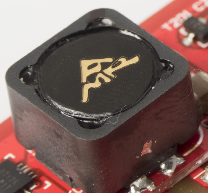
It is no ordinary power transformer because:
- Operating at high frequencies, it offers the best capacitance-to-noise ratio. ie. Being 10x smaller, it filters 10x better.
- Its noise floor is second-to-none; negligible compared to regular-sized counterpart.
Our German supplier could not produce them to the tight tolerances required. We spent the past few months searching for a transformer that met our strict requirements but it seems it does not exist.
Given the AMR/iFi philosophy, we were undeterred. When the going gets tough, the tough gets…..making. So we purchased the materials, equipment and hand-wound them in-house.
 Our ‘HFP’ Transformer in the iGalvanic3.0 is very difficult to manufacture:
I. Pure 6N OFHC wire must be used.
Our ‘HFP’ Transformer in the iGalvanic3.0 is very difficult to manufacture:
I. Pure 6N OFHC wire must be used.
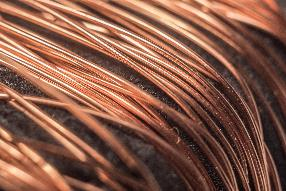 II. The winding MUST be hand-wound to a special configuration. Machine winding is nigh on impossible (yup, we tried).
II. The winding MUST be hand-wound to a special configuration. Machine winding is nigh on impossible (yup, we tried).
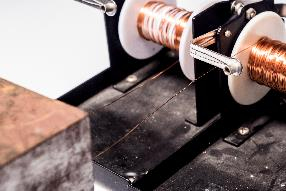 III. With the wire core complete, the shield is fitted and a special resin is injected.
III. With the wire core complete, the shield is fitted and a special resin is injected.
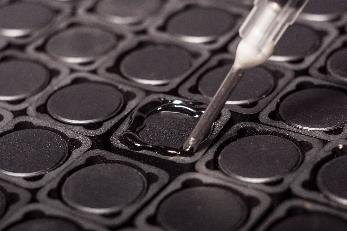 IV. Then oven baked at 120° C for five mins. Here are some we made earlier.
IV. Then oven baked at 120° C for five mins. Here are some we made earlier.
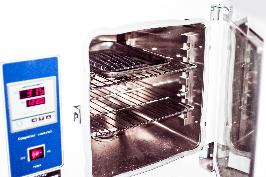
With a width of 10mm only, it is tiny and therefore difficult to handle.
We had to call upon our considerable experience with audio transformers (starting way back with the AMR 77 transformers through to more recently, the Pro iESL) to make a power transformer that would work at the frequencies required for the Stealth Converter Technology.
The result is the AMR High-Frequency Power Transformer which measures very nicely indeed.
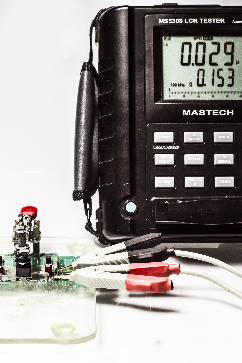 V. Panasonic OSCONs – if good enough for AMR…
V. Panasonic OSCONs – if good enough for AMR…
For the iGalvanic3.0, we have pushed the sonic envelope just that ‘little bit’ further compared to the pre-production units that made the rounds.
At AMR starting from the CD-77 Compact Disk Processor in 2006, we have more than a decade of experience with components including the Panasonic Os-Con.
Digital Engine from the AMR CD-77
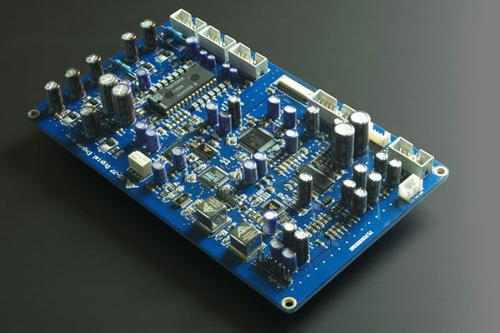
Trickling down from the AMR, the iGalvanic3.0 is the latest to receive a ‘sprinkling’ of Panasonic Os-Cons.
The original and best. Sanyo/Panasonic Os-Con.
Panasonic/Sanyo Os-Con (Organic Semi-Conductor) – are the original made by Sanyo (subsequently acquired by Panasonic in 2009) and are widely regarded as the ultimate capacitor for digital circuitry. We concur. Visibly, they have a distinctive purple marking and being the best (in our opinion) they are also the most expensive. Often costing many times the price of normal electrolytic capacitors, they are seldom found in +US$5,000 products, never mind the iGalvanic3.0 at <US$400.

Os-Cons have been around for a good while. Among the larger value capacitors useful in power supplies, they hold a special place. In a ground-breaking series on capacitor performance published in the late Nineties and early Noughties in Wireless World, Cyril Bateman showed they persistently outperformed all alternatives at high frequencies and were second in low-distortion only to the Elna Silmic.
After the Panasonic takeover, supply chains were changed and they became difficult to obtain. Further, only more recently have Os-Cons become available in the small values/voltages/sizes needed for the relatively miniature equipment in the iFi range.
So despite their steep cost, (around 10x that of common electrolytic capacitors), the micro iDSD Black Label was the first to feature them.
There are Os-Cons and there are Os-CONS.
As a side note, a few years ago, when the ‘Organic Semi-Conductor’ patent expired, other manufacturers jumped on the ‘Organic Semi-Conductor’ bandwagon with their own attempts. We have tested these alternative ‘Os-CONS’ offered by other manufacturers. We were surprised to find they were little better then generic electrolytic capacitors and dramatically inferior to the original Sanyo product. It is reassuring to know that we have been tempted, but never switched and stayed true to Panasonic Os-Cons.
And here’s how they look like both
inside and
out. Purple = good, whereas anything else = mediocre at best.
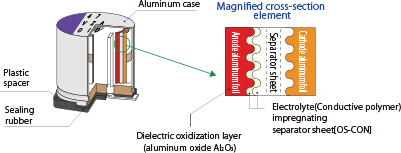 A sprinkle of the purple magic
A sprinkle of the purple magic
It is only logical that Panasonic/Sanyo with a 16-year start over their less costly imitations, is in our opinion still the best which is why the iGalvanic3.0 features the real Os-Con in certain areas:
2 x Power Supply for the downstream REgenerate2/REclock2/REbalance2 section.
1 x for the Output Power supply.
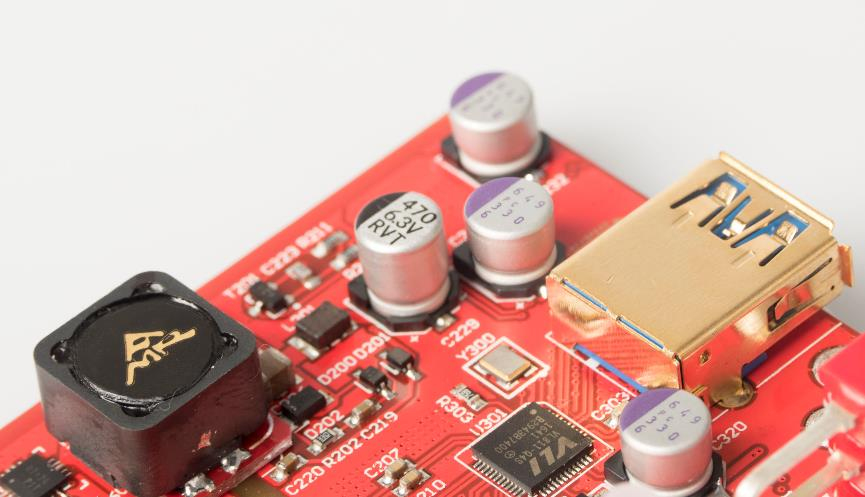 VI. Aircraft-grade aluminium for EMI/RFI shielding
VI. Aircraft-grade aluminium for EMI/RFI shielding
The iGalvanic3.0 features the iFi trademark aluminum block. This enclosure acts as a shield against harmful electromagnetic interference (EMI/RFI) to further minimize noise. Blocking all the noise coming from a PC results in vast sound quality improvements. Non-aluminium designs offer little to no shielding from EMI/RFI.






















































